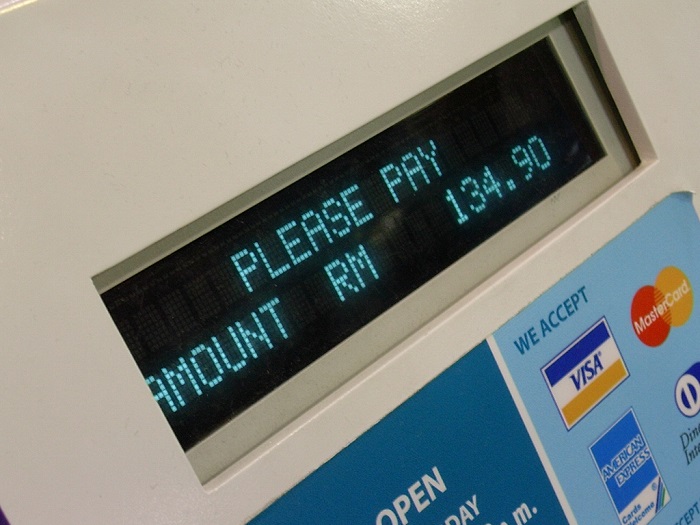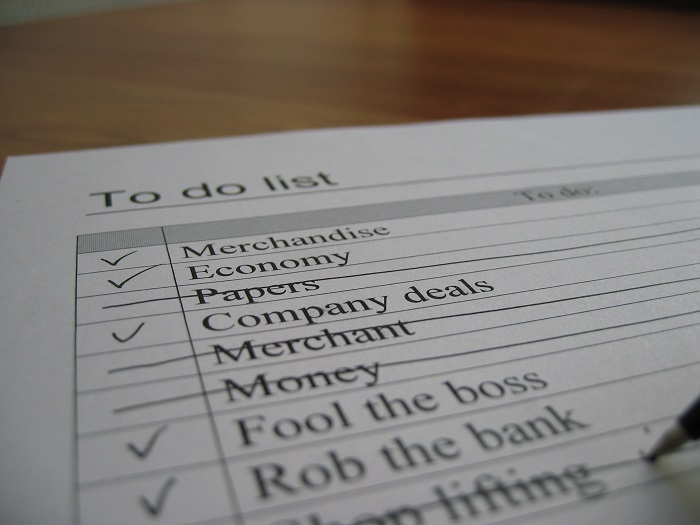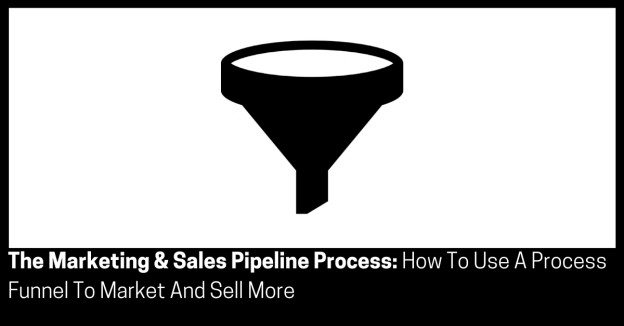Approximate read time: 11 minutes
Various marketers have used different models to describe marketing & sales pipelines:
- Customer, Content, Conversion (Eben Pagan);
- Get, Grow, Keep (Steve Blank);
- Acquisition, Activation, Retention, Revenue, Referral (Dave McClure);
- And so on…
Here are the elements:
- STEP 1: Traffic;
- STEP 2: Content;
- STEP 3: Gated Offers;
- STEP 4: Low Priced Offers;
- STEP 5: Main Offers;
- STEP 6: Profit Offers;
- STEP 7: Engagement; and
- STEP 8: New Product, Service or Solution Launches.
Let’s begin with…

1) Traffic
…The first step is about acquiring traffic.
This step is about increasing the number of prospects, AKA lead generation, AKA marketing.
One of the best quotes I have read on this is by serial entrepreneur, Steve Blank:
“Marketing’s primary role at a startup is to drive sales. Marketing’s job is to make the VP of Sales the richest person in the company. How does marketing do that? Well, marketing’s job…was to create end-user demand and drive it into our sales channel… [and] to make our products understood by our sales force and channels.”
This could be done via either paid or earned visitors.
Depending on who your ideal customer is, you will be targeting Business-To-Business (B2B) or Business-To-Consumers (B2C) prospects via some of the following methods:
- Cold email;
- Partnerships;
- Advertising;
- Search Engine Optimization;
- Publicity;
- Social Media;
- To name a select few…
Of course, the exact details of how to do this are beyond the scope of this guide.
Now, do you want to know how to get traffic for free?
More accurately, do you want to know how to get cost neutral traffic, or to buy traffic that pays for itself?
Read on to find out how to do this.
So, in summary, Step 1 is about increasing the number of prospects, AKA lead generation, AKA marketing.
Once you have acquired traffic, it is time to send the traffic to pre opt-in content…

2) Content
…Step 2 is about sending your newly acquired traffic to educational and informational pre opt-in marketing and sales content.
This pre opt-in content is usually located on “owned media,” such as your website, but it could be in a variety of different layouts, types and styles, such as video, infographics or text guides and so on.
It is important to note that your business is not a charity, and marketing and sales content is not just about giving relevant wisdom away for free to build reciprocity with prospects with no catch at all.
Reciprocity is discussed in Robert Cialdini’s book, Influence: The Psychology of Persuasion.
Reciprocity is the psychological principle that states that people are more inclined to return free support received.
In the context of marketing and sales, the returned free support is in the form of payment for products, services or solutions.
Content should always have additional goals, or catches, such as the following seven options:
- Drive external traffic – to introduce prospects to your brand;
- Segment prospects via opting-in for free gated offers – to generate leads;
- Encourage prospects to consume more available content – to fuel more brand touch points;
- Get prospects to purchase low priced product, service and solution – to trigger and activate purchasers;
- Urge customers to consume more available content – to provide customer satisfaction;
- Introduce your main product, service and solution – to create awareness of them; and
- Try something out – to see if they can do it themselves.
Of course, the exact details of how to do this are beyond the scope of this guide.
So, in summary, Step 2 is about increasing the number of prospects, AKA lead generation, AKA marketing, with a particular focus on getting prospects to opt-in for gated offers – to generate leads in the first instance, then consume other available content and to encourage more brand touch points. This is the loop referred to in the Pipeline.
This leads to the most important part of the pre opt-in content (which is related to balancing the charity nature of the content), that is, embedding a “gated offer” into the pre opt-in content…

3) Gated Offers
…Step 3 is about embedding a “gated offer” in the pre opt-in content.
A gated offer is a free offer that has a “gate”, or entrance, attached to it.
In order to get the free offer, you must pass the entrance.
The cost of passing through the entrance is the prospects contact information, usually in the form of an email address, but it could be a phone number, too.
This leads to the first decision tree.
If prospects, say no to the opt-in to the gated offer and bounce (exit) from the web page, then repeat the process by remarketing in an attempt to bring them back to the same or similar category of content that again has a gated offer on it.
NOTE: Remarketing is a digital advertising tool that allows you to reach the visitors who have previously visited your website via a tracking cookie in their browser through digital advertisements.
This then leads to another decision tree.
If prospects say no again and opt-in and bounce from the web page on the second remarketing attempt, repeat the process as many times as needed by remarketing in an attempt to bring them back to the same or similar category of content that has a gated offer on it.
If prospects say yes and opt-in to the original opt-in offer, or the latter opt-in offer(s), you will immediately send them to a low priced offer before you deliver the opt-in offer they originally wanted.
Of course, the exact details of how to do this are beyond the scope of this guide.
So in summary, Step 3 is about increasing the number of prospects, AKA lead generation, AKA marketing.
This leads to presenting a low priced offer…

4) Low Priced Offers
…Step 4 is about presenting a low priced offer.
This leads to the second decision tree.
If prospects say no to the low priced offer, you will immediately deliver the opt-in offer they originally wanted to build trust with them.
Then, you will give prospects some free introductory bonus marketing and sales content related to the category they opt-in for, to build more reciprocity with them.
After this, you will then offer the low priced offer again.
This leads to another decision tree.
If the prospect again says no to the low priced offer, you will present them with more content in a different but related category to the one they opt-in for, to teach them about your brand and re-segment them.
If you have been following so far, this will bring you back to Step 1 in order to repeat the process from the beginning as many times as needed until the point prospects purchase a low priced offer.
If prospects say yes to the low priced offer, you will immediately send them to your main offer before you deliver the low priced offer.
At this point, prospects have now become customers.
This is a very powerful buying psychological decision.
If you recall back to the “few ways to market and sell” I mentioned at the start of the guide, this means they are more likely to buy higher-priced offers, more often.
Now, back to cost neutral traffic, or buying traffic that pays for itself.
Smart marketers will price their low priced offer at the same price it costs them to acquire traffic in the first place.
I refer this strategy as a “Self-Paying Offer.”
For example, if it costs you $10 to acquire traffic and convert that traffic to customers via a low priced offer, then you should aim to price your low priced offer at $10 as well, to make it cost neutral.
This means you can buy as many customers as you can find dollars to pay for them, without being at a loss.
The low priced offer then becomes a loss leader, and you build up a list of customers for free, even if you have made no profit at this stage.
This is much more beneficial than just having a list of prospects.
Of course, the exact details of how to do this are beyond the scope of this guide.
So in summary, Step 4 is about increasing the number of customers, AKA prospect conversion, AKA sales and increasing the engagement of prospects and customers to buy more.
This leads to presenting your main offer…

5) Main Offers
…Step 5 is about presenting your main offer to new customers.
If customers (remember that prospects are now customers) say no to your main offer, you will immediately deliver the low priced offer to build even more trust with them.
Then present them again with more content in a different but related category than they opt-in for to teach them about your brand and re-segment them.
If you have been following so far, this will bring you back to Step 1 in order to repeat the process from the beginning as many times as needed until the point prospects purchase the main offer.
If customers say yes to the main offer, in both cases you will immediately send them to your profit offer before you deliver main offer.
Of course, the exact details of how to do this are beyond the scope of this guide.
So in summary, Step 5 is about increasing the engagement of prospects and customers to buy more.
This leads to presenting profit offers…

6) Profit Offers
…Step 6 is about presenting offers that make you a lot of profit, AKA up selling, next selling, down selling and cross selling.
An upsell offer, next sell, down sell or cross sell is where you ask the prospect to purchase another related or unrelated product, service, or solution offer.
Up until now, you have learned that low priced offers may only just pay for themselves or run at a loss.
The main offers may only make you a little profit margin.
However, presenting profit offers will generate a lot more profit.
If customers say no to the profit offer, you will immediately deliver the main offer to build even more trust with them, then you will present them with more content in a different but related category than they opt-in for to teach them about your brand and re-segment them.
If you have been following so far, this will bring you back to Step 1 in order to repeat the process from the beginning as many times as needed until the point prospects the a profit offer.
If customers say yes to the profit offer, in both cases, you will immediately deliver the profit offer to build even more trust with them.
Of course, the exact details of how to do this are beyond the scope of this guide.
So in summary, Step 6 is about increasing the engagement of prospects and customers to buy more, and increasing the value and number of customer transactions, AKA up selling, next selling, down selling and cross selling.
This leads us to prospect and customer engagement…

7) Engagement
…Step 7 is about engaging with prospects and customers, AKA retention and loyalty.
To keep prospects and customers engaged with your brand, you can utilize the following tools to increase satisfaction and retention and get testimonials and referrals (via word of mouth):
- Additional free educational content (also delivered by social media);
- A forum for community discussion; and
- Customer service.
- To name a select few…
If you have done everything correctly to this point, then at this step you should be actively asking for referrals and testimonials from your prospects and customers.
Of course, the exact details of how to do this are beyond the scope of this guide.
So in summary, Step 7 is about increasing the engagement with prospects and customers, AKA retention and loyalty.
This leads to new product, service or solution launches…

8) New Product, Service Or Solution Launches
…So where do new product, service or solution launches fit into a marketing and sales pipeline?
The opportunity to send information about new product, service or solution launch can happen at any point in the pipeline that you would ordinarily present prospects and customers with more content in different but related categories what they originally opted-in for.
Of course, the exact details of how to do this are beyond the scope of this guide.
So in summary, Step 8 is about increasing the success of new product, service or solution launch, AKA combining it all.

Take Action
You made it…
You now have a solid plan for creating a marketing and sales pipeline.
That’s the full Marketing and Sales Pipeline, and it will be more than enough for you to get started on your own.
You can get the printed illustrated Process Map of this and 20 others for free, here
And if you’re serious about marketing and selling more, the logical next step is to contact me to help you do it yourself, have me do it with you, or have it all done for you.
This maybe the momentum you need to get great marketing and sales results.
Now let’s learn about The Marketing & Sales Communication Process.
Or do you simply want more like this?
Join below to be notified immediately about new content and more. No annoying daily emails and no spam – just good content when it’s posted.

